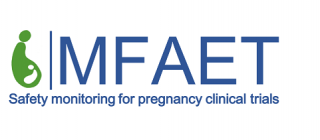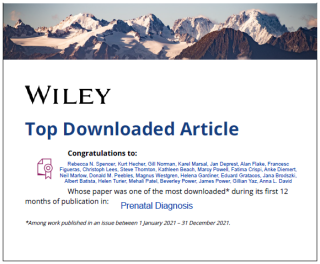A new system to provide better safety monitoring for clinical trials in pregnancy.

Conducting clinical trials in pregnancy raises many challenges, primarily due to safety concerns for the mother and her fetus (unborn baby). This is particularly the case when testing new maternal and fetal therapies. To assess therapeutic safety, we can monitor important signals about the wellbeing of the mother and fetus, called Adverse Events or AEs.
What are Adverse Events?
Adverse Events or AEs are defined as “any untoward medical occurrence in a patient or clinical trial participant administered a medicinal product and which does not necessarily have a causal relationship with this product.”
To assess the safety of a drug or intervention, researchers record any AEs which occur during clinical trials. AEs have standard definitions to ensure good communication between clinical trial staff. And to get the most detailed safety data, these AEs are usually graded from 1 to 5. Standard criteria exist for defining and grading hundreds of AEs outside pregnancy. The Common Terminology Criteria for Adverse Events (CTCAE) is the most commonly used grading system listing hundreds of AEs.
But historically there has been a lack of a comprehensive Adverse Event framework in pregnancy trials, with only a handful of AEs available. This has severely limited the understanding of risks in conducting clinical trials in pregnant women.
The new MFAET terminology aims to transform the conduct of clinical trials in pregnancy, making them much safer for pregnant women and their babies.
MFAET: Maternal Fetal Adverse Event Terminology
MFAET is a comprehensive system of definitions and grading of maternal and fetal AEs. This work was lead by the EVERREST International Adverse Event Consensus Group of fetal therapy, obstetric, neonatal, and pharmaceutical industry experts from Europe and the United States. An international consensus process has now agreed the terminology. The current version is 1.1., February 2022, which has now been realigned with the corresponding terms in the Medical Dictionary for Regulatory Activities (MedDRA).
You can find out more here:
- Development of standard definitions and grading for Maternal & Fetal Adverse Event Terminology. Paper published in Prenatal Diagnosis October 2021
- How can I use Maternal Fetal Adverse Event Terminology? Resources for users.
- The MFAET Steering Committee
- How were patients and public involved in developing MFAET?
- How is this useful for patients and the public?
- UCL News - 'New guidelines to improve pregnancy trials will pave the way for novel therapies for women and babies
Other useful links:
- MedDRA, the Medical Dictionary for Regulatory Activities
- Common Terminology Criteria for Adverse Events (CTCAE)
- The Neonatal Adverse Event Severity Score NAESS version 1.0
- Development of NAESS version 1.0
- Development of MFAET was funded by European Commission, EGA Hospital Charity, Wellcome Trust and EPSRC, National Institute for Health Research University College London Hospitals Biomedical Research Centre
- The IDEAL Collaboration. The IDEAL Collaboration is an initiative to improve the quality of research in surgery to build up a robust evidence base about new procedures and devices
 Close
Close



